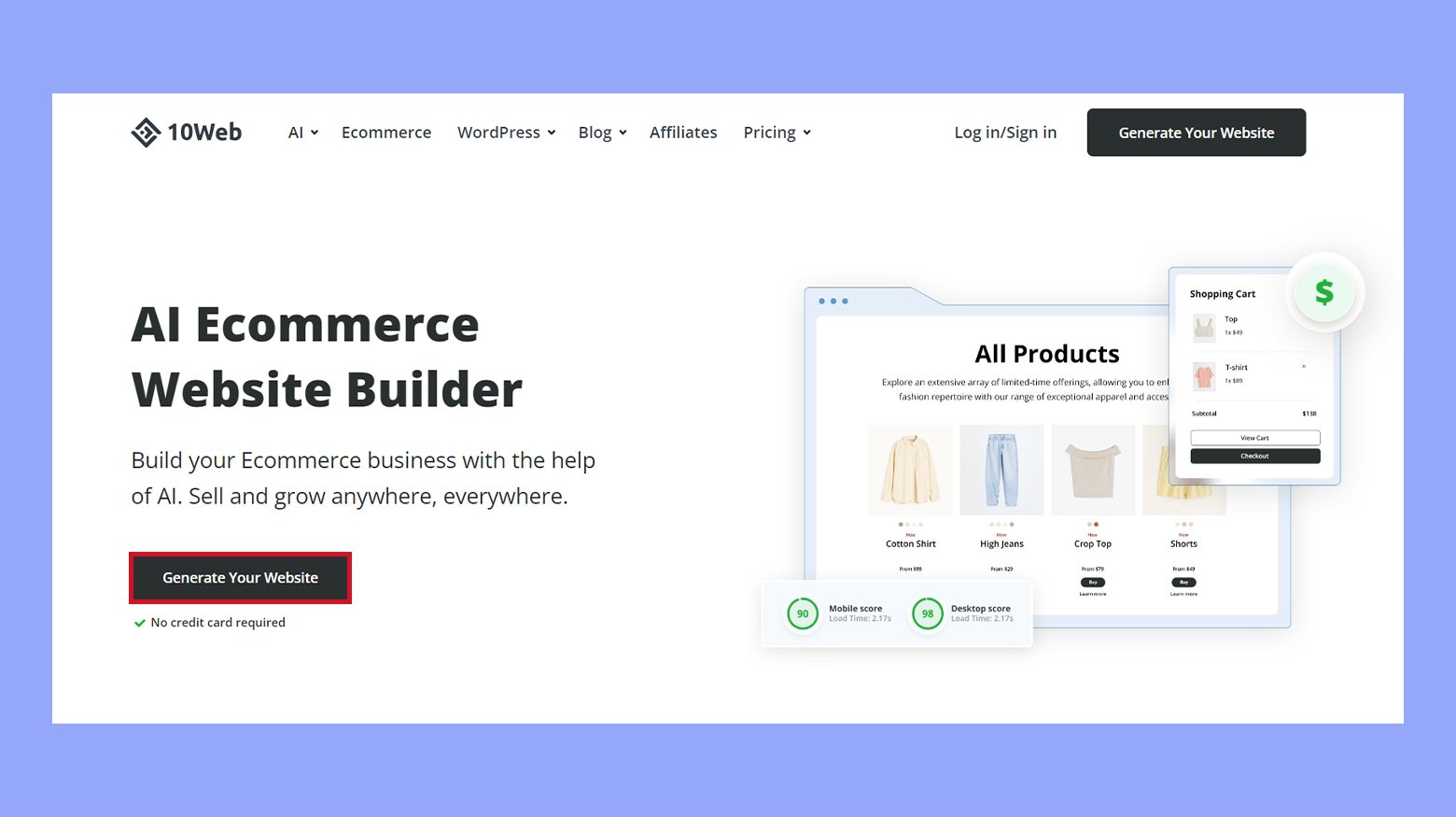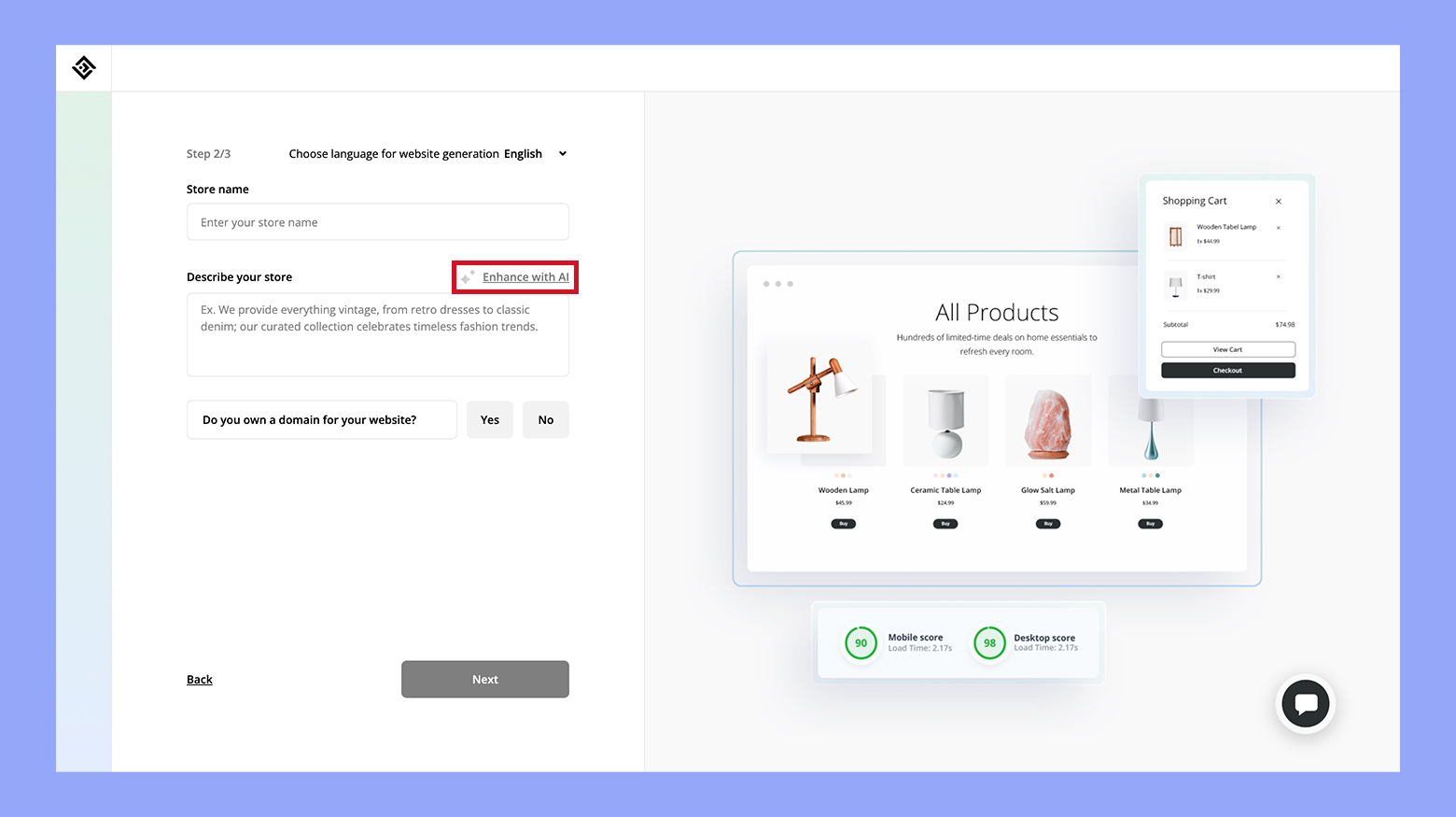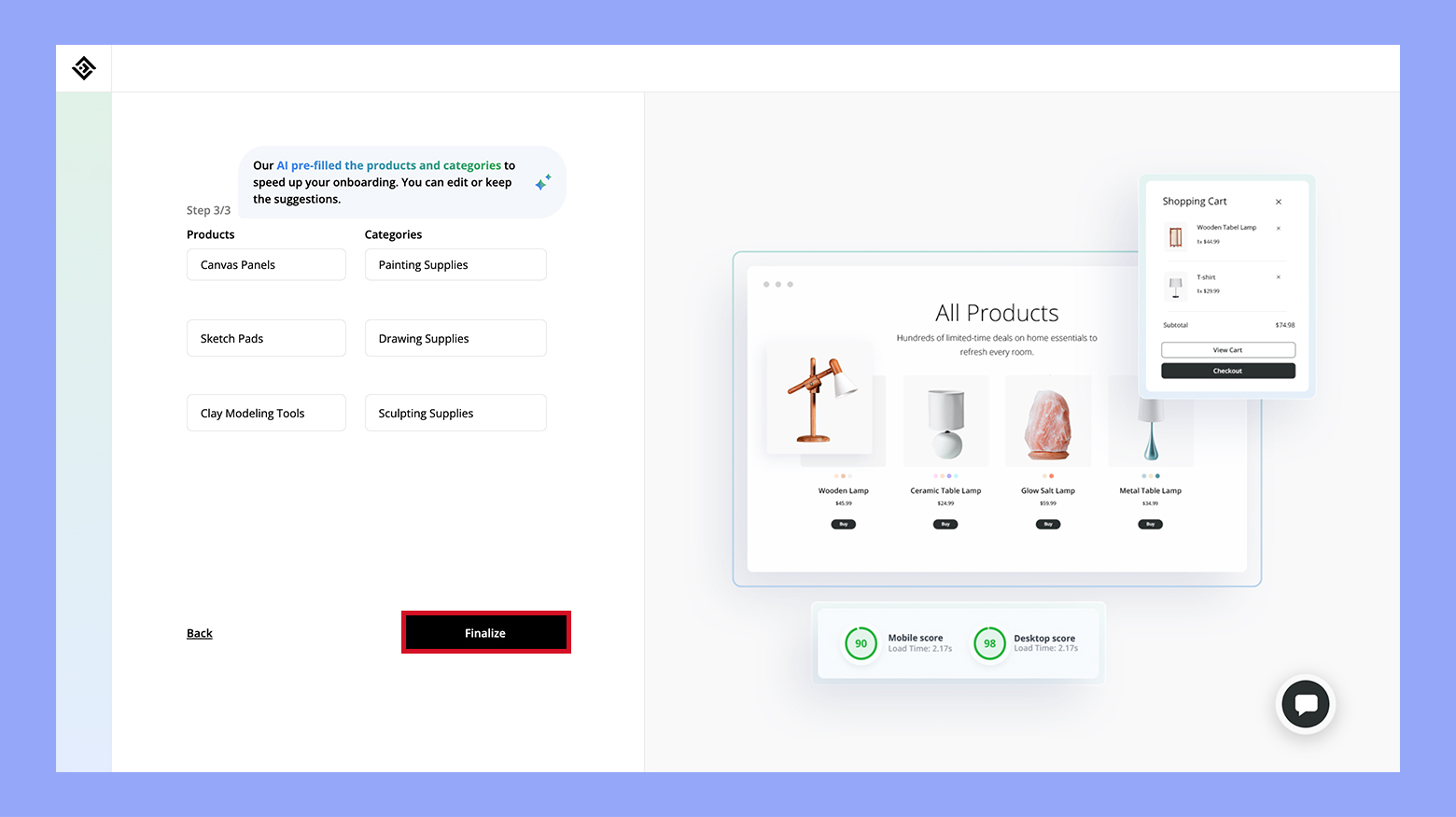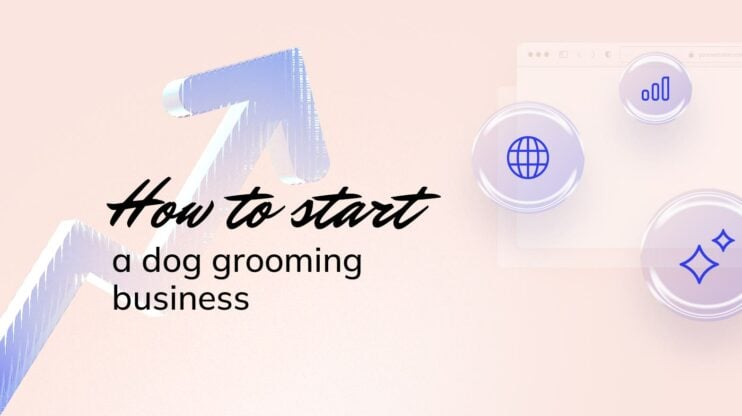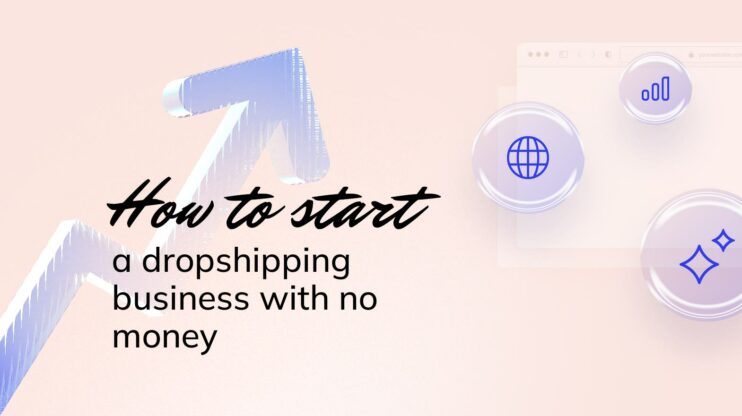Starting a soap business offers an exciting opportunity to blend creativity with entrepreneurship. With the high demand for unique, artisanal soaps and the potential for impressive profit margins, this venture is ideal for those passionate about crafting quality products. This guide on how to start a soap business will walk you through the essential steps, from planning and legalities to branding and marketing, ensuring you build a successful and fulfilling business.
FAQ
Is soap making a profitable business? How much does it cost to start a soap company? What is needed to start a soap business? Is soap making hard?

Looking to sell online?
Create your custom online store in minutes with 10Web AI Ecommerce Website Builder and take your business online.
Stage 1: Preparations for your soap business
Let’s learn how to lay the groundwork for a successful soap business by crafting a solid business plan, understanding legal requirements, and setting up your finances. Additionally, we’ll guide you through designing a compelling brand that resonates with your target market. These preparations are crucial for building a strong foundation and ensuring long-term success.

Step 1: Developing your business plan
A solid business plan is the backbone of your soap business. It helps you define your goals, understand your market, and establish a structure for your company.
Determining your soap business model
First, decide how you want to operate your soap-making business. Will you sell online, at local markets, or through retail stores? Each model has its own set of challenges and benefits.
Think about your production process. Are you planning to handcraft all soaps, or will you scale up to commercial production?
Profit margins and expenses will vary based on your choices. Costs like raw materials, packaging, and shipping need to be calculated. Your business model will also determine pricing strategies and sales channels.
Analyzing your target market
Market research is crucial. You need to know who your customers are, what they want, and how much they are willing to pay. Consider demographics like age, gender, and income level.
Check out competition to see what they offer and at what price points. This helps you position your products effectively. Specialize in a niche market, like organic or vegan soaps.
Create a customer profile that includes their preferences, buying behavior, and pain points. This information will guide your product development and marketing strategies. Targeting the right market ensures higher sales and loyal customers.
Step 2: Understanding legal requirements
Starting a soap business involves navigating various legal requirements to ensure your business operates smoothly and legally. These include obtaining necessary permits and licenses and following FDA regulations to comply with safety and labeling standards.
Navigating permits and licenses
To legally run your soap business, you need permits and licenses specific to your location. First, register your business name with your state or city. This makes your business official and ensures no one else can use your name.
Next, apply for a business license. Contact your local city or county office to get this done. This license permits you to legally operate your business in your area. You might also need a seller’s permit if you plan to sell your soap in retail settings.
Lastly, don’t forget about zoning permits. Check local zoning regulations to ensure your home or chosen location is suitable for a soap-making business. It’s crucial to comply with these rules to avoid potential fines or business closure.
Structuring your soap business entity
Choosing the right legal entity impacts taxes, liability, and administration. You have options like sole proprietorship, partnership, limited liability company (LLC), and corporation.
A sole proprietorship is easy to set up but doesn’t protect personal assets. A partnership involves shared responsibilities and profits, ideal if you have a business partner.
An LLC offers liability protection without the complexity of a corporation. It’s a popular choice for small business owners. If you plan to scale significantly, a corporation might be best, although it’s more complex and regulated.
Discuss these options with a legal advisor to make the best decision for your firm. Structuring it correctly from the start can save you headaches later.
Complying with FDA regulations
The FDA oversees the soap industry to ensure products are safe for consumer use. To comply with FDA regulations, label your soap correctly. This means listing all ingredients, the net weight, and your business name and address on the packaging.
Additionally, follow proper good manufacturing practices (GMP) while making your soap. This includes maintaining a clean workspace, using quality ingredients, and keeping detailed records of your production processes.
If your soap is marketed for cosmetic purposes, you must ensure it doesn’t contain prohibited ingredients. Regularly checking FDA guidelines will help you stay compliant. This will protect your customers and maintain trust in your brand.
Understanding these legal steps is essential when learning how to start a soap business. By following the rules, you’ll be better prepared to launch and grow your business safely and legally.
Step 3: Setting up your finances
Starting a soap business involves careful planning of your finances. You will need to manage startup costs and set up a system for accounting and taxes.
Managing startup costs and operating budget
When figuring out how to start a soap business, understanding your costs is crucial. Start by writing down all initial expenses. Rent for your workspace is a major cost. If you don’t need a separate space, you might save money by working from home.
Next, list the essential equipment like molds, blenders, and safety gear. Don’t forget to buy inventory like ingredients for your soap, packaging materials, and shipping supplies.
Insurance is important too. Think about liability insurance to protect your business. Lastly, set aside money for business cards and marketing to attract customers. You can consider loans or finding investors if your startup costs are high.
Accounting and taxes essentials
Set up a business bank account separate from your personal one. This helps keep your finances organized. Use accounting software or hire an accountant to keep track of your income and expenses. This will make your life easier when tax season arrives.
Familiarize yourself with local tax obligations. You will need to track all sales and pay appropriate taxes. Don’t forget to keep all receipts and records for expenses. This can help you claim deductions and reduce your taxable income. Proper accounting ensures you stay compliant and avoid any legal issues.
Stage 2: Setting up your soap business
This section guides you through the essential steps of establishing your soap business, from developing unique brand and setting competitive prices to sourcing quality supplies and equipment. You’ll also learn about effective packaging and labeling, exploring various distribution channels, and protecting your business with proper legal measures. Following these steps will help you create a solid foundation for your soap business.
Step 1: Designing a compelling brand
Creating a compelling brand is essential for standing out in the competitive soap market. Focus on developing a memorable logo and packaging and ensuring consistent branding across all platforms.
Developing a memorable logo and packaging
A strong logo is the face of your soap business. It represents your brand’s identity. Keep it simple yet distinctive. Colors matter – they should align with your brand personality. For example, green can signify natural ingredients.
Packaging plays a big role in attracting customers. It must be appealing and functional. Think about the materials you choose and how they reflect your brand’s values. Eco-friendly packaging can appeal to environmentally conscious consumers.
Use clear and readable fonts on labels. Include essential information like ingredients, weight, and usage instructions. Consider offering different designs for various product lines to create a sense of variety and luxury.
Ensuring consistent branding across platforms
Consistency is key to building trust with customers. Your branding should be uniform across all platforms, from your website to social media accounts. Use the same color schemes, fonts, and logo.
Create a style guide to maintain consistency. This guide should outline how your branding elements are to be used. Share it with anyone who works on your marketing materials or product packaging.
Monitor your brand’s online presence regularly. Ensure that your messaging, tone of voice, and visual elements match your in-store branding. This uniformity helps in reinforcing your brand identity and makes it easy for customers to recognize you across different mediums.

Looking to sell online?
Create your custom online store in minutes with 10Web AI Ecommerce Website Builder and take your business online.
Step 2: Developing your products
Creating high-quality soap involves selecting the right ingredients and techniques. It’s also about developing a unique product line to stand out in the market.
Selecting ingredients and techniques
First, choose oils and fats such as olive oil, coconut oil, and shea butter. These form the base of your soaps. Using natural or organic ingredients can appeal to customers looking for more natural soap options. Essential oils are key for adding fragrance, while botanicals can be a nice visual touch.
Understanding the techniques is important. The cold process involves mixing lye with oils at room temperature, creating a smooth texture. The hot process cooks the soap mixture, making it ready to use sooner. Consider which method suits your style and production schedule.
Safety is crucial. Always use gloves and goggles when working with lye. Consistently measure accurately using a scale to ensure quality and repeatability.
Creating a unique product line
Once you master the basics, differentiate your soaps. Develop various soap recipes that cater to different needs, such as sensitive skin or exfoliating properties. Experiment with additives like oatmeal, honey, or activated charcoal for added benefits.
Offering a range of cosmetics such as lotions or bath bombs can complement your soap line. Packaging also matters. Attractive and eco-friendly packaging can make your product more appealing and create brand loyalty.
Lastly, pricing your products wisely ensures profitability. Keep a check on the cost of ingredients and production. By doing this, you keep your business sustainable while offering high-quality soaps.
Step 3: Setting the right prices
Setting the right prices for your soaps involves understanding your costs, analyzing your competition, and ensuring profitability. You’ll need to carefully balance making a profit with offering competitive prices that attract customers.
Competitive analysis for pricing strategy
First, research your competitors in the soap market. Identify key players and look at their pricing. Take note of price differences, the types of soaps they offer, and any special features they highlight.
Visit online stores, local markets, and niche boutiques. Compare their prices to understand the range within the soap making industry. Make a list of at least 5-10 competitors and their prices for similar soap products.
Review customer reviews. Pay attention to comments about pricing to see what customers value and are willing to pay. Analyze what makes certain soaps more appealing and whether customers perceive them as worth the price. Use this information to position your pricing strategy effectively.
Calculating cost and profit margins
Calculate all your costs. Include raw materials like oils, lye, fragrances, and colors. Don’t forget about packaging, labeling, and shipping costs.
Here’s a simple example:
| Item | Cost per Unit |
| Oils (per bar) | $0.50 |
| Fragrances | $0.20 |
| Colors | $0.05 |
| Packaging | $0.10 |
| Labeling | $0.05 |
Total Cost per Bar: $0.90
Next, decide on your profit margin. Typical profit margins in the soap industry range from 25% to 50% or higher. Apply your chosen margin to the total cost to set your sale price.
This method ensures your soap making business remains profitable while attracting customers with fair prices. Adjust your prices as necessary based on ongoing cost and market changes.
Step 4: Sourcing supplies and equipment
Starting a soap business involves carefully selecting high-quality ingredients and reliable tools. This will ensure your soaps are not only beautiful but also safe and effective.
Finding reliable suppliers for ingredients
You need to find trusted suppliers for your soap ingredients, including oils, scents, and colors. Look for suppliers known for their quality and consistency. Bulk purchasing can save money, so try to find suppliers that offer discounts for larger orders. Negotiating prices can also help, especially if you’re ordering in large quantities.
Visit trade shows or soap-making forums to get recommendations on good suppliers. Always check reviews and ask for samples before making large purchases. This helps you ensure their products meet your standards. Consistent quality is key, so establish a good relationship with your suppliers.
Acquiring tools of the trade
Quality tools make soap making easier and more enjoyable. Essential tools include a scale, thermometer, measuring cups and spoons, immersion blender, mixing bowls, and molds. Don’t forget safety gear such as gloves and goggles.
Consider buying soap molds of different shapes and sizes to add variety to your products. An immersion blender helps mix ingredients thoroughly. You might also want additional equipment like a soap cutter if you plan to produce in larger batches. Investing in high-quality tools ensures reliability and durability as you grow your soap business.
Step 5: Packaging and labeling your products
Packaging and labeling your handmade soap products are crucial for attracting customers and meeting legal requirements. Your packaging should be eco-friendly and visually appealing, while your labels must be accurate and compliant with regulations.
Designing attractive and legal labels
Creating labels for your soap involves more than just a great design. First, make sure each label includes the product name, net weight, and your business contact information. You should also list all ingredients in descending order of predominance. This transparency helps build trust with your customers.
FDA requirements state that you must also include any required warnings. For example, if your soap contains allergens, list them clearly. Use readable fonts and make sure all text is clear and easy to find. Colors should enhance readability, not distract from the information.
Consider using icons or small graphics to highlight features like “organic” or “natural.” This can catch a shopper’s eye quickly. Keep it simple but informative to stay within the legal guidelines while also being visually appealing.
Choosing environmentally-friendly packaging
Eco-friendly packaging not only helps the environment but also attracts environmentally conscious consumers. Choose materials like recycled paper and biodegradable plastic. Boxes made from Kraft paper or cardboard are excellent choices. These materials are sturdy and can be easily customized.
Think about minimalistic design to reduce waste. Use packaging that fits your handmade soap products snugly to avoid excess material. Consider using biodegradable shrink wrap or reusable muslin bags. These options reduce your carbon footprint and appeal to eco-friendly buyers.
Include a recycling symbol and clear disposal instructions on your packaging. This informs customers on how to properly dispose of or recycle your packaging. Highlighting your commitment to sustainability can be a strong selling point for your soap business.
Step 6: Exploring distribution channels
When starting a soap business, understanding distribution channels is key to reaching your customers effectively. This includes setting up online sales platforms and partnering with retailers and local markets.
Establishing online sales platforms
Creating an online sales platform is crucial. Websites like Etsy are perfect for selling handmade soaps. Setting up a dedicated website for your handmade soap business using platforms like 10Web allows more control over branding and customer reach.
Start by choosing a domain name that matches your business name. A well-designed website should be easy to navigate, visually appealing, and reflect your brand.
You can start in one of two ways:
- Clone an existing website: Provide 10Web AI Website Builder with a URL of a design you admire, and it will produce a similar site.
- Build from the beginning: Respond to a few questions about your business to generate a website from scratch.
For this demonstration, we’ll use the second method:
- Visit the 10Web Website Builder page and select Generate your website.

- Choose Proceed to create a new website with AI.

- Specify your business type.

- Provide your business name and description. Utilize the Enhance with AI tool if necessary.

- Opt for Yes to get a domain or click No if you already have one.
- Enter information for your first three services and categories. AI will pre-fill them, allowing you to edit or accept the suggestions. Click Finalize when done, and wait for 10Web to create your site.

- Once your site is ready, preview it and make any required adjustments using the tools provided by 10Web.
Next, focus on high-quality images and detailed product descriptions to highlight your soap product line. Include essential information like ingredients, benefits, and pricing. Make sure you have a seamless checkout process to encourage purchases.
Don’t forget to integrate an about us page to share your story and connect with customers. Adding customer reviews and testimonials can build trust and drive word-of-mouth recommendations.
Start with an attractive, easy-to-navigate online store. Use high-quality images and engaging product descriptions. Include essential details like ingredients, benefits, and usage instructions. Optimize your site for search engines using keywords like “how to start a soap business” to attract traffic.

Looking to sell online?
Create your custom online store in minutes with 10Web AI Ecommerce Website Builder and take your business online.
Partnering with retailers and local markets
Collaborating with local retailers and markets can expand your physical presence. Approach local stores, gift shops, and boutique retailers that may stock handmade or specialty goods. Present them with samples and a short pitch explaining why your soap would be a great addition to their inventory.
Consider local farmers’ markets or craft fairs. Renting a booth at these events can introduce your soap to a new audience. It’s also a chance to get direct feedback from potential customers.
Building relationships with store owners and market organizers is vital. Offer flexible terms and consignment arrangements to make your proposal more attractive. Regularly attend local events to ensure a steady presence for your brand.
Step 7: Protecting your business
When starting a soap business, it’s important to protect your venture from potential risks and legal issues. Focus on getting proper insurance, understanding liability, and managing legal responsibilities.
Securing insurance and understanding liability
One of the first steps to protect your soap business is securing appropriate insurance. Liability insurance is essential. It protects you if someone gets hurt using your product. You might also need product liability insurance, which covers you if your soap causes harm or damage.
Consult an insurance agent for advice. They can help you choose the best policies for your business needs. Also, understand the terms and conditions of your insurance, so you know what is covered and what is not. This can prevent unpleasant surprises later.
Lastly, always stay updated with any changes in insurance requirements for small businesses in your area. Staying proactive can save you from potential financial setbacks.
Managing risks and legal responsibilities
Besides insurance, there are several legal responsibilities you need to manage. First, consider forming an LLC (Limited Liability Company). An LLC can protect your personal assets from business debts and liabilities.
Acquire necessary permits and licenses. Check with local and state authorities to make sure you comply with all regulations. This might require health department approvals, especially if you’re making soap at home.
Don’t forget about taxes. Register your business with the IRS and stay on top of your tax obligations. Keep detailed records of all business transactions and expenses. This will make tax season a lot smoother.
Finally, label your products accurately. Clear, honest labeling prevents customer complaints and complies with FDA regulations. Proper labeling can also build trust with your customers and enhance your brand’s credibility.
Stage 3: Building online presence and marketing strategies
Creating an effective online presence is crucial for the success of your soap business. This stage covers how to build a professional website, utilize social media marketing to reach a wider audience, and employ networking strategies to grow your customer base and brand awareness. Implementing these tactics will help you establish a strong market presence and drive sales.
Step 1: Leveraging social media marketing
Using social media platforms helps you connect with more potential customers and grow your soap-making business. Start by creating profiles on popular social media networks like Instagram, Facebook, and Pinterest. Each platform offers unique ways to showcase your products.
Post consistently with high-quality images and engaging captions. Share behind-the-scenes content, like soap-making processes, to engage your audience.
Use hashtags and tags to reach a wider audience, and don’t shy away from collaborating with influencers who align with your brand. Engaging with followers by responding to comments and messages boosts your presence and builds community.
Running promotions, offering discounts, and hosting giveaways can attract more followers. Leverage paid advertising options to target specific customer segments and boost visibility for your soap business.
Step 2: Networking and growing your soap business
To grow your soap business, it’s important to network effectively and take part in events. Building relationships with other soap makers and potential customers can greatly enhance your growth.
Joining soap maker communities
Getting involved in soap maker communities can be very beneficial. Online forums, Facebook groups, and local clubs are great places to start. These groups allow you to share tips, get advice from experienced soap makers, and stay updated on industry trends.
You can also join professional associations like the Handcrafted Soap and Cosmetic Guild. Membership often comes with resources like training, certifications, and networking events. This can help you make valuable connections and learn from experts.
Participate actively in these communities by asking questions, sharing your experiences, and offering help. Being seen as an engaged member can lead to collaborations and business referrals. When starting a soap making business, having a support network can make a big difference.
Expanding through workshops and events
Workshops and events are another excellent way to grow your soap business. By attending or hosting workshops, you can demonstrate your expertise and attract customers who are interested in learning about soap making.
Local craft fairs, farmer’s markets, and industry conferences are ideal for setting up a booth and showcasing your products. These venues offer direct exposure to potential customers and allow for face-to-face interactions, which can build trust and loyalty.
Consider also conducting your own workshops where you teach soap making techniques. This positions you as an expert and can help you sell more products. Promoting these events through social media and community bulletin boards can increase attendance. Networking at these events can also lead to partnerships and new business opportunities.
Using these strategies will help your soap business flourish and connect you with a wider audience.
Conclusion
Starting a soap business involves careful planning, creativity, and strategic execution. From crafting a solid business plan and understanding legal requirements to designing a compelling brand and setting up effective marketing strategies, each step is crucial for success. By following the guidelines provided in this article on how to start a soap business, you can build a profitable and sustainable venture that stands out in the market. Additionally, leveraging tools like 10Web can help streamline your website creation and management, ensuring a professional online presence for your business.


